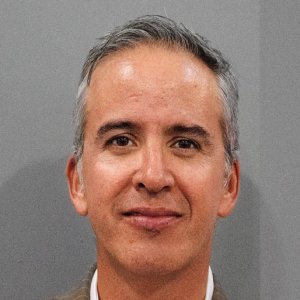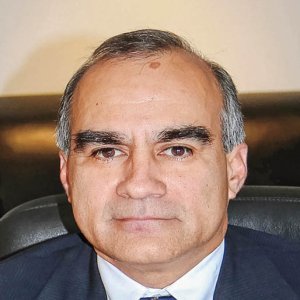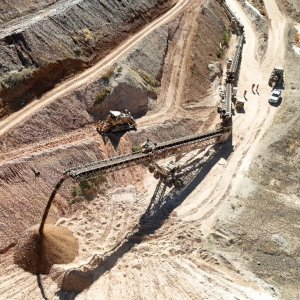Undersecretary Settles into New Role

STORY INLINE POST
Q: To what extent does the creation of the Undersecretariat of Mining reflect the growing importance of mining?
A: The Undersecretariat was created by the Ministry of Economy as an acknowledgment of the importance of mining as a strategic activity and a response to the industry’s expansion and the need for regulation, promotion and development. Investment in Mexican mining was US$19.8 billion in 2011 and 2012, and in the next four years, from 2013 to 2016, amid falling metal prices, it reached US$19.9 billion. The mining industry’s share of total GDP increased from 0.86 percent in the period between 2009 and 2012 to 0.96 percent in the 2013-2016 period. Employment in the mining-metallurgical sector as of December 2012 was 328,555 workers, while in December 2016 it registered a total of 354,702 workers. Finally, exports reached a similar level, with a US$17.8 billion annual average in 2009-2012 and US$16.4 billion in 2013-2016. This demonstrates that, despite falling metal prices from 2013 to 2016, investment levels, GDP and employment in the mining industry registered better performance than in previous years.
Another reason for the creation of the Undersecretariat was the need to reach a better level of communication and conversation both at a national and international level. Internally, the General Coordination of Mining lacked communication with areas of the federal government that are directly related to mining, such as the Ministries of Environment, Labor, Energy and Finance. It was therefore proposed that the General Coordination should be elevated to a higher level to boost this relationship, since its counterparts have always worked at the level of Undersecretaries.
Internationally, Mexico is a member of various trade organizations. As part of the Pacific Alliance (AP), along with Chile, Colombia and Peru, the AP Mining Group has been formed. Our country is also a member of APEC, in which there is the group called the Mining Task Force. Finally, in bilateral relations, Mexico also belongs to instruments such as the Mexico-China High Level Working Group and the Mexico-Canada High Level Working Group. The existence of the Undersecretariat will facilitate communication and bring attention to mining issues in these and similar instances.
Q: How will the Undersecretariat operate differently from the General Coordination of Mining?
A: The growing investment in the mining sector is demanding that we increase our institutional capacity to provide better and easier ways for local and foreign investors in their projects. The Undersecretariat is carrying out five key priorities. Firstly, we are strengthening human resources to fulfill institutional functions and objectives. Secondly, we are modernizing our technological platform and digitalizing the concession process and cartography to accelerate the process for allocating a concession title. Thirdly, we have prioritized re-engagement of Mexican Geological Survey (SGM) resources in exploration activities to provide more projects with more information focused on rare earths and base industrial metals. Along the same vein, we are also promoting the generation of geological-mining, geochemical and geophysical mapping of the national territory on a scale of 1:50,000, prioritizing the areas of greatest interest and susceptibility to contain new potential mineral deposits. Finally, we are strengthening the InterInstitutional Mining Group, made up of federal government agencies involved in regulating the sector.
Q: What is your opinion of the decision to implement the Ecological Taxes by the Zacatecas government?
A: According to a mining sector specialist, the state of Zacatecas does not have jurisdiction to legislate on environmental taxes, as the General Constitution does not expressly establish it. Equally, the General Law of Ecological Equilibrium and Environmental Protection (LGEEPA) does not grant the authority this power. Both the federal and state governments have the power to design, develop and apply economic instruments that encourage the fulfilment of environmental policy objectives but this is limited to setting fiscal incentives and it cannot be used for tax purposes.
On Feb. 14, 2017, the federal government therefore submitted, through its General Counsel, a constitutional conflict claim to the Supreme Court of Justice of the Nation (SCJN). The court will now determine the constitutionality of the actions of the state of Zacatecas. If the SCJN concludes that the legislator and the Governor of Zacatecas issued a general provision exercising powers that fall within the jurisdiction of the federation, the contested provision could be declared invalid and without effect.
Q: What does Mexico need to do to compete with other jurisdictions to attract more greenfield investment?
A: The public policy of the Mexican government regarding the mining sector is included in the Mining Development Program 2013-2018, which defines the objectives, strategies and lines of action to boost mining activity within a framework of sustainable development. One of the purposes of the Mining Development Program is to promote higher levels of investment and competitiveness in the mining sector. The Undersecretariat of Mining carries out investment promotion policies through participation in the main national and international mining events.
The most important conventions that we attend, among others, include the annual Prospectors and Developers Association of Canada (PDAC) Conference in Toronto and the China Mining Conference. At PDAC, the Mexican delegation implemented actions aimed at disseminating the advantages of national mining as an investment destination, services and policies to support the sector, as well as government policies targeting the rational and sustainable use of mineral resources. China Mining, the most important mining event in that country, was attended by a Mexican delegation that included mining project holders, who held business meetings with Chinese entrepreneurs.
Another one of the policies implemented by the current federal administration is to increase the quality of information for mining projects, thereby developing detailed geology, geophysics and geochemistry activities plus direct exploration through diamond drilling. This provides the means to continue exploration, according to the results derived from mining operations.
To attract more greenfield investment, SGM allocates most of its human resources and budget to developing Mexican mining potential through continuous mapping the country on a 1:50,000 scale. This is an essential requirement to identify mining exploration targets. The accumulated goal set for 2017 is 837,717km2 with a coverage of around 60 percent of the national territory with mining potential.























